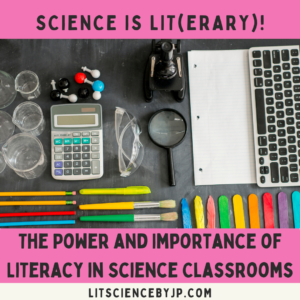Whether you’ve been teaching for a few months or a few decades, you may have asked yourself, what are The Next-Generation Science Standards (NGSS)? While teaching to the NGSS may seem intimidating, it doesn’t have to be. Let’s explore an overview of the NGSS and unpack them in a way that’s both meaningful and easy to understand.
Why a New Set of Standards?
In my first year of teaching, New York’s science standards consisted of (what I interpreted as) a mix of unit-specific content standards and skills for each grade. While The Common Core Standards existed at the time, professional development around those standards focused on math and English teachers.
Over the next few years, the emphasis shifted to The Common Core Standards for all subjects. I embraced this, as I always felt it was my responsibility to teach literacy in science. While The Common Core Standards weren’t perfect, I had a fantastic group of colleagues with whom I planned lessons. We made it work for our students.
Fast-forward to the summer of 2018 when I attended a PD on the rollout of New York’s version of The NGSS. As I sat there both excited and overwhelmed, I was curious about The Next Generation Science Standards NY and how they would affect my instruction.
I learned that the NGSS were created to engage students in STEM as it happens in the real world. Moreover, the NGSS aims to equip students with the skills needed to enter into and excel at careers in STEM. Furthermore, our nation was losing its competitive edge, specifically in technology. According to the Carnegie Institute, “The nation’s capacity to innovate for economic growth and the ability of American workers to thrive in the modern workforce depends on a broad foundation of math and science learning, as do our hopes for preserving a vibrant democracy and the promise of social mobility that lie at the heart of the American dream.”

Fantastic, right?! Sure. That’s if schools are prepared to equip students with that broad foundation of math and science learning. Unfortunately, there seemed to be a gap. According to Nextgenscience.org, The United States Ranked 23rd in Science, 30th in Math, and 20th in Reading Literacy out of 65 members of the Organization for Economic Cooperation and Development (OECD) education systems. This is the drive behind the NGSS.
What do The NGSS Cover?
Overall, The Next Generation Science Standards encourage students to DO THE SCIENCE rather than memorize and regurgitate it. In other words, we best equip our young scientists to become mature, paid, employed, and globally impactful scientists by allowing them to engage in science as real-world practitioners do. Therefore, we must shift from lectures, rote memorization, and assessments that focus on lower order thinking to research, exploring, investigating, creating, & problem-solving. Let’s take a holistic view of how the different parts of the standards aim to accomplish the aforementioned. At the core of The NGSS are three dimensions: Science and Engineering Practices, Disciplinary Core Ideas, and Crosscutting Concepts.

Science and Engineering Practices
The purpose of the Science and Engineering Practices Dimension is to ensure students learn and practice the activities in which all scientists and engineers engage. These are outlined as the following eight practices:
- Asking Questions and Defining Problems
- Developing and Using Models
- Planning and Carrying Out Investigations
- Analyzing and Interpreting Data
- Using Mathematics and Computational Thinking
- Constructing Explanations and Designing Solutions
- Engaging in Argument from Evidence
- Obtaining, Evaluating, and Communicating Information
Disciplinary Core Ideas
Disciplinary Core Ideas is the content to be taught. The Disciplinary Core Ideas are broken down into 4 main categories:
- Physical Science
- Life Science
- Earth and Space Science
- Engineering, Technology, and Applications of Science
Crosscutting Concepts
Crosscutting Concepts are exactly what the name implies: concepts that apply to all of the sciences. In other words, these concepts allow students to connect what they’ve learned from different disciplines. The NGSS outlines seven crosscutting concepts:
- Patterns
- Cause and Effect: Mechanism and Prediction
- Scale, Proportion, and Quantity
- Systems and System Models
- Energy and Matter: Flows, Cycles, and Conservation
- Structure and Function
- Stability and Change
Multilingual Learners and the NGSS

In upcoming posts, I’ll unpack each of the three dimensions. Specifically, we’ll be viewing standards through the lens of implications for Multilingual Learners (MLLs). Here’s a sneak peek: Yes, the standards apply to our MLL students. The good news is, that MLLs can complete grade-level NGSS-aligned assignments with targeted support that I look forward to guiding you through.







